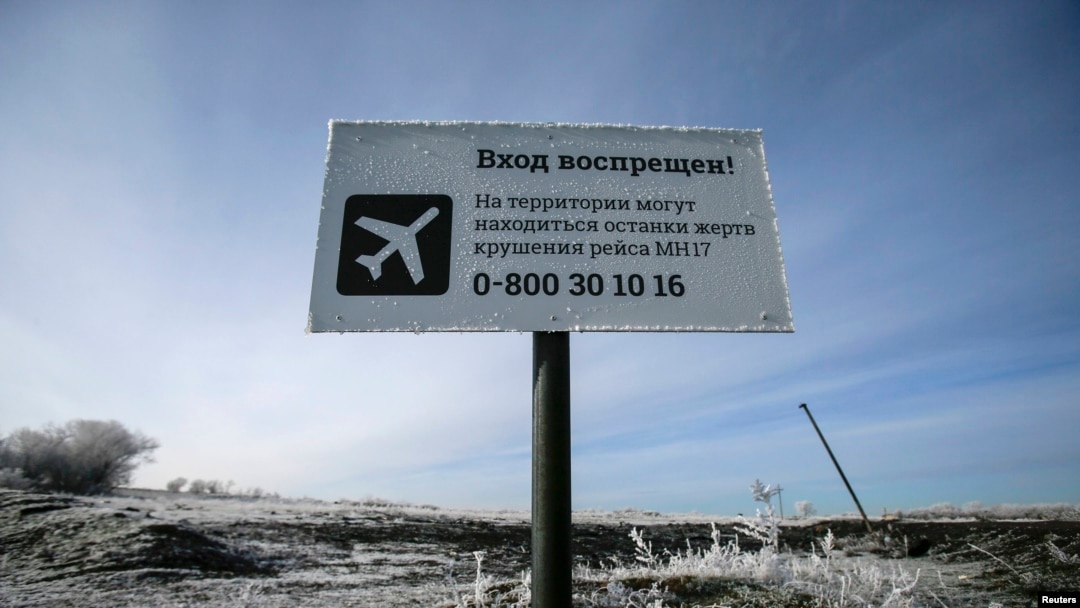Following a Dutch television report that appeared to corroborate the widely-held theory that a pro-Russian separatist-held Buk missile launcher shot down a Malaysian Airlines flight, Moscow is now vigorously promoting new claims that a Ukrainian jet caused flight MH17 to crash.
The report for Dutch RTL Nieuws claims that a resident of eastern Ukraine has provided three high-resolution photos -- two showing plumes of smoke consistent with a Buk missile system and a third showing what appears to be the aftermath of the Malaysian flight crash.
The timestamps on the photos, which were geolocated to the area of the crash, correspond to the time when the plane went down.
Two experts working with the Dutch team said they could find no evidence of tampering.
Eliot Higgins, whose Bellingcat website used open-source information to track the movements of the Buk believed by many to have brought down MH17, told RFE/RL it's "extremely likely" the photographs are genuine and are further evidence of a surface-to-air missile launch.
"The Buk we tracked on July 17 unloaded north of that area, and was seen driving down the road towards the area, so it certainly all fits together very nicely," he said over e-mail. "Everything in the photo matches what we know already."
But on December 22 -- just hours after the Dutch report -- the Russian "Komsomolskaya Pravda" tabloid published an interview with an alleged anonymous former Ukrainian soldier who claimed that he could provide a firsthand account of the July 17 disaster, which killed all 298 people onboard.
According to his account, a pilot in an SU-25 aircraft left his base in Dnipropetrovsk equipped with R-60 air-to-air missiles shortly before the Boeing 777 was shot down. When the "very scared" looking pilot returned there were no missiles left on the twin-engine Soviet-built plane.
The pilot, who the supposed witness names in the "Komsomolskaya Pravda" report, allegedly told another service member that "the plane was in the wrong place at the wrong time."
Four days after the July crash, the Russian Defense Ministry floated the theory that an SU-25 had shot down the Malaysian jet, but aviation experts quickly cast doubt on the claim.
At the time, David Gleave, an aviation and safety researcher at Loughborough University, told RFE/RL that when loaded with missiles the SU-25 could not reach an altitude much higher than 5 kilometers -- MH17 was flying at around 10 kilometers when it was hit.
According to the Russian-backed witness, the plane was able to overcome this hindrance by turning its nose up and firing into the air.
Pavel Felgenhauer, a journalist and military analyst, told the independent Snob.ru that the new Russian claims are "complete garbage."
Felgenhauer said the SU-25 would not have had the capacity to catch up to a Boeing 777 at cruising speed. And because the R-60 is a heat-seeking missile, he said it does not make sense that the nose of MH17 appears to have been hit rather than the engine.
Ukraine's Security Service said the alleged Ukrainian pilot did not fly on the date of the MH17 crash and that his plane had been taken out of commission for repairs on July 16.
But in a statement, Russia's Investigative Committee said "the way he behaved and from his stated facts, the investigators had no doubts about the sincerity of the information" provided by the alleged witness.
The law-enforcement authority, which has had a combative relationship with Kyiv since battles between government forces and pro-Russian separatists broke out in eastern Ukraine last April, also said its source had passed a polygraph test.
Higgins, said the new Russian story may be meant to "confuse the situation."
"You just have to look at how quickly that story and other stories related to it were spread in the wake of [the Dutch report]."
-- Glenn Kates


